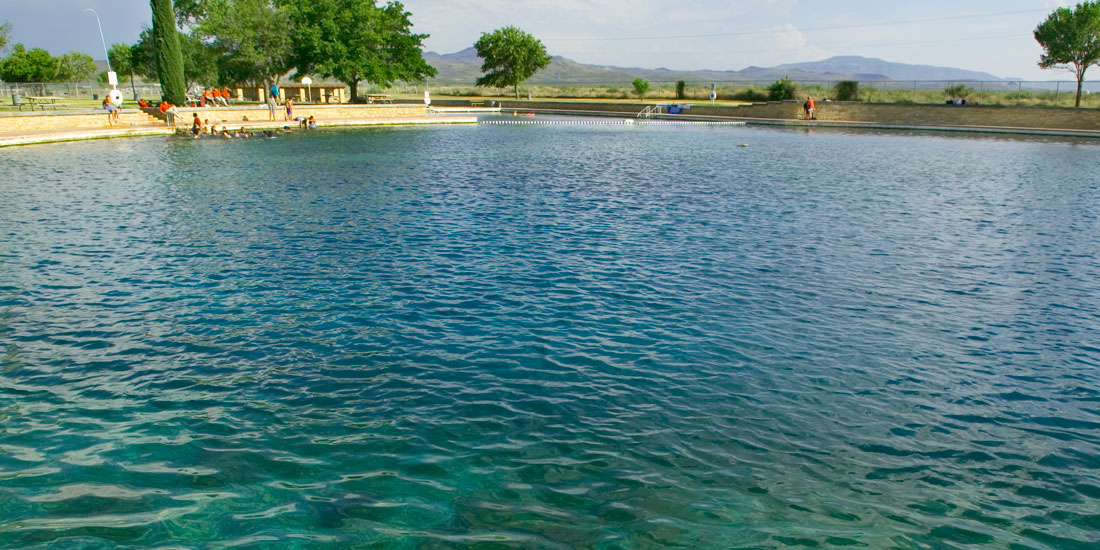
WATERS OF BALMORHEA
A One-Day to the East from Marfa
Stop 1: Calera Chapel
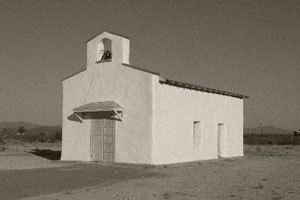
The tiny church of Calera was built two miles east of the famous San Solomon Springs around 1930. The small adobe structure, renovated in 2003, served the community. Their website says it well: “Calera is a story of how humans migrate to areas with resources for life, a story of missionaries who follow the people and tend to their spiritual needs, and the modernization that comes with time and finally people moving on when the resources of life disappear.” Before the springs were contained and used for ranches, the water attracted native peoples who settled and farmed here. This church is a reminder of the healthy ecosystem and community that existed here before development. www.caleratexas.org
Stop 2: Balmorhea State Park
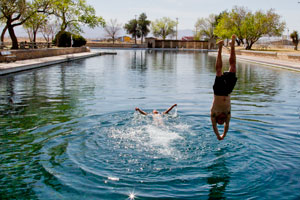
In the southwest corner of this small state park is the largest in a series of artesian and gravity springs formed by subsurface geologic faults in the Balmorhea area: San Solomon Springs. More than fifteen million gallons of crystalline water flow from the springs each day. In a desert environment, this water is far more than utilitarian: it sustains a diversity of unique life forms that would not otherwise exist.
From 1934 to 1940, the enrollees of Company 1856 (the group of Civilian Conservation Corps workers located here) built roads, buildings, bridges, and irrigation conduits throughout this forty-six-acre park. Projects included building the overnight accommodations of San Solomon Courts (distinctive one-story, red-tile-roofed, white-plastered adobe brick cabins that had garages in each of the eighteen units) and the two-acre swimming pool.
Unfortunately, construction of the pool destroyed the natural desert wetland, or cienega, that originally surrounded the springs.
Restoration efforts today are recreating a cienega ecosystem. Spring water now flows out of the pool and passes through cattails, rushes, and reeds in San Solomon Cienega. This wetland serves as a home for abundant aquatic life including two small, endangered desert fish: the Pecos gambusia and the Comanche Springs pupfish. Occurring at no other place in the world, this sole remaining population of pupfish relies on the springs and canals of Balmorhea for survival. Other animals, including resident and migrant birds, depend on this water and lush vegetation for food, water, and shelter. Local farmers rely on San Solomon water to irrigate crops that would otherwise not survive the blistering desert summers.
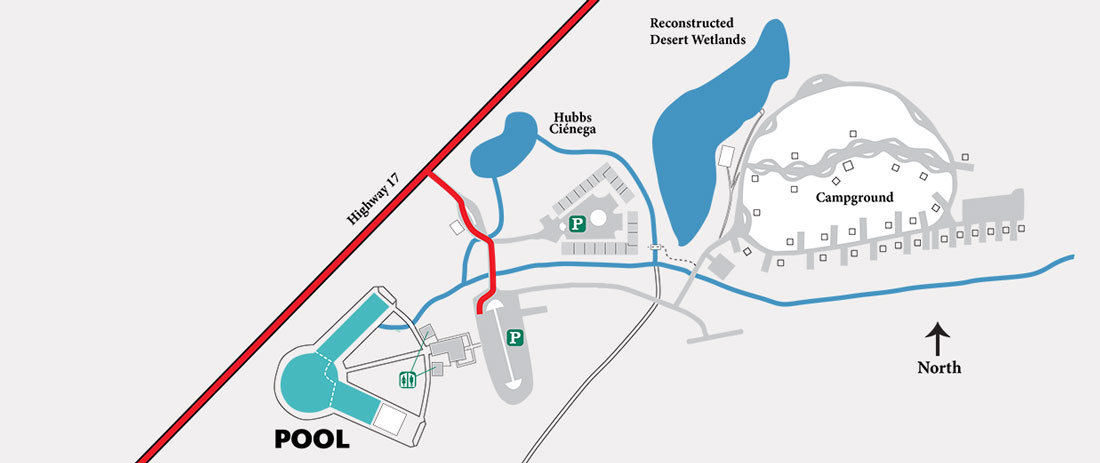
Don’t miss the opportunity to enjoy the world’s largest spring-fed swimming pool. The pool reaches a depth of 25 feet, covers 1.75 acres, and holds 3.5 million gallons of crystal-clear water. The water temperature stays between 72 and 76°F year round. Swim, scuba dive, or just relax under the trees at this historic oasis in arid West Texas. tpwd.texas.gov/state-parks/balmorhea
Stop 3: The City of Balmorhea
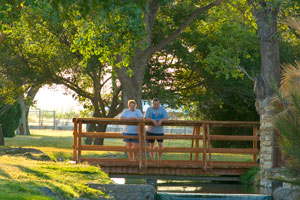
The City of Balmorhea (pronounced Bal-more-ay) is an amalgamation of Balcom, Morror, and Rhea, the surnames of its founders. This small town hosts a wide variety of birdlife. Birding opportunities are especially rich during winter months and during migration. The town’s mature trees are a great place to spot unusual neotropical birds that pass through and take advantage of the habitats created by San Solomon Springs.
Stop 4: Balmorhea Lake
Drive out to the lake, two miles east of Balmorhea, for one of the greatest bird watching areas around. This body of water attracts diverse species, all documented in the checklist available online or at the park’s visitor center.
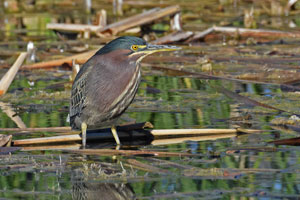
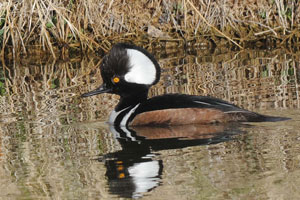
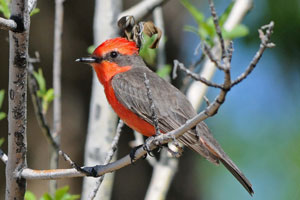
Watch for wading birds, like the green heron, unusual pelagic migrants, such as the herring gull, a wide variety of ducks, like the hooded merganser, and colorful neotropical migrants, such as the vermillion flycatcher. Since the lake functions as a storage facility, water level fluctuates greatly. The southern edge of the lake is excellent for shorebirds when water levels are low. Loons, diving ducks, and Clark’s and western grebes favor this end of the lake in fall and winter.


